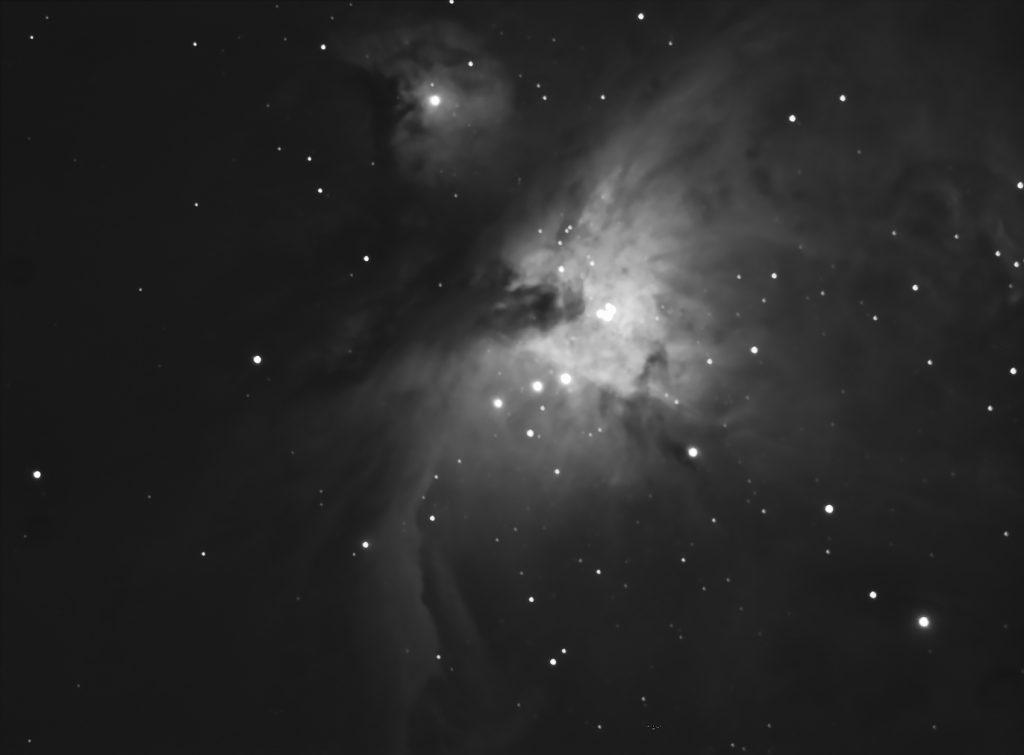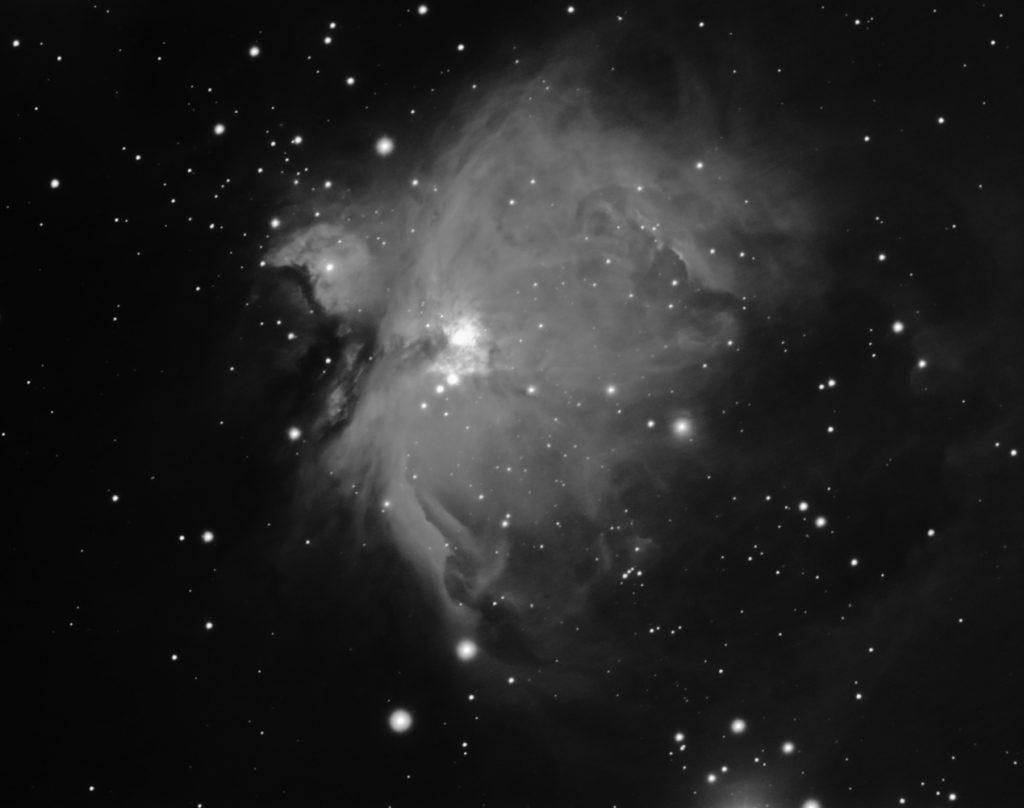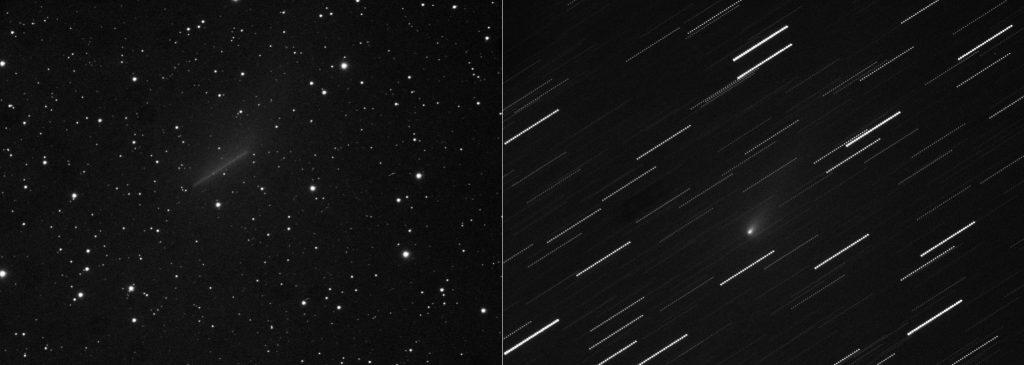Now does that feel good!
A clear night and nothing to get on with, plus the Moon won’t be up for a while.
So why not let myself loose under the stars and do some imaging?
I was also recently loaned a CCD camera to try, so I was really keen to test this out.
I had a very basic CCD camera many years ago, but didn’t really gel with it. It used to cause me much frustration and the results always seemed to leave a hell of a lot to be desired. Since then I have concentrated mainly on DSLR imaging, which I found much easier, selling the CCD for a give-away price many years ago at Kelling.
As time has gone by, I really want to start capturing objects a bit closer up and reveal a bit more detail than the DSLR can usually manage. So when the offer of using the CCD came my way, I snapped it up willingly.
First Target, the good old favourite M42, The Great Orion nebula.
This image was taken using the 190 Mak-Newt. 40 second subs.
Towards the end of the evening, as the Moon was appearing above the neighbours house, I used the ED80 to take a wider field of M42. Also 40 second subs.

Here’s Comet C/2017 T1 (Heinze), (Its out-gassing has nothing to do with the Beanz).

This comet is really shifting. First image stacked on the stars, so comet has moved to produce a streak during the 10 minutes time of all the sub exposures. Had to keep the exposures down to 15 seconds to avoid the comet trailing in each sub. Second image was stacked on the comet so the stars are trailed.
With care, I feel this CCD could produce some really fabulous results.
Bring on the clear skies in 2018.
Now where did I put my filter wheel?
